This article was published as a part of the Data Science Blogathon.
Introduction
Decentralized services, such as swapping, farming, pooling, lending, borrowing, and many more, are offered by decentralized applications (dapps). Each decentralized application offers its own features. For example, you may use Aave for decentralized lending and borrowing, or maybe you may use QuickSwap for decentralized finance services. For this, you will have to connect your Web3 wallet to different dapps, but is there a platform that offers all these services in one place? Yes!! Trader Joe’s it is.
In this guide, we will go through how to use Trader Joe, an all-in-one decentralized application built on the Avalanche blockchain that offers the majority of the decentralized services at a low cost.
What is Trader Joe?
Trader Joe is an all-in-one decentralized application (dapp) built on the Avalanche blockchain. Trader Joe’s is the fourth largest dapp on Avalanche blockchain, currently having a TVL (Total Value Locked) of $151.31 million. Trader Joe offers decentralized services such as Swapping, Pool, Yield Farming, NFTs, Staking, Lending, and Borrowing, as well as a launchpad. The native token of Trader Joe is the $JOE token.

TVL – refers to the total funds locked in a decentralized application.
To execute any transaction on a decentralized application, there are fees associated with it. This fee is paid in the native token of the underlying blockchain. Since Trader Joe is built on the Avalanche blockchain, users must pay gas fees in $AVAX tokens.
Click here for more insights into Trader Joe.
To navigate to Trader Joe click here.
Blockchain and Wallet Used
Blockchain
As stated above, Trader Joe is built on the Avalanche blockchain. In this guide, I will connect Trader Joe to the Avalanche blockchain to demonstrate its functions and features.

Avalanche is a layer-1 blockchain which is a fast, low-cost, eco-friendly blockchain.
Wallet

Since I am using the Avalanche blockchain in this guide, I will require a wallet that supports the Avalanche blockchain. The wallet I will be using in this guide is the MetaMask wallet.
MetaMask is a Web3 crypto wallet that supports several blockchains and enables users to store, send, receive, buy and swap their crypto assets in a secure and decentralized way.
Click here to learn how to integrate the Avalanche blockchain into the MetaMask wallet.
Connect Wallet to Trader Joe
To visit the Trader Joe website, click here.
To interact and utilize the features of Trader Joe, a user must connect their Web3 wallet. You can connect your wallet by following the steps below:
- On the homepage, click on the Connect to a Wallet button.
- Select the wallet of your choice (in our case MetaMask).
- Select which account of your wallet you want to connect to the dapp.
- Click on the Next button.
- Click on the Connect button.
- Switch the network to the Avalanche network by clicking on the Switch Network button.
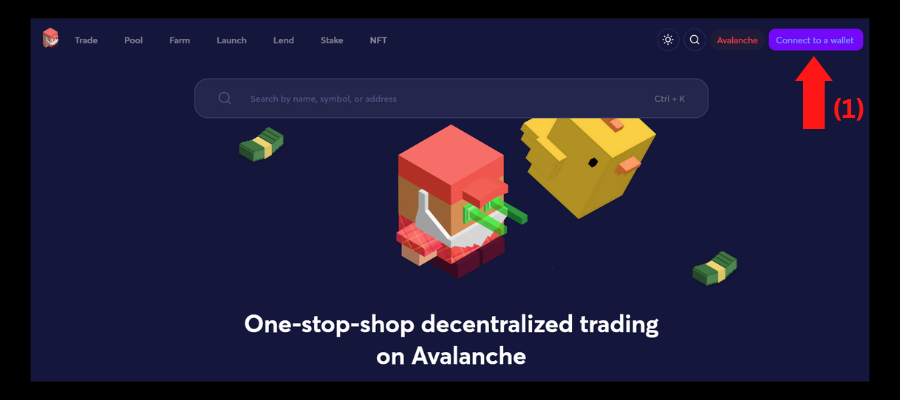
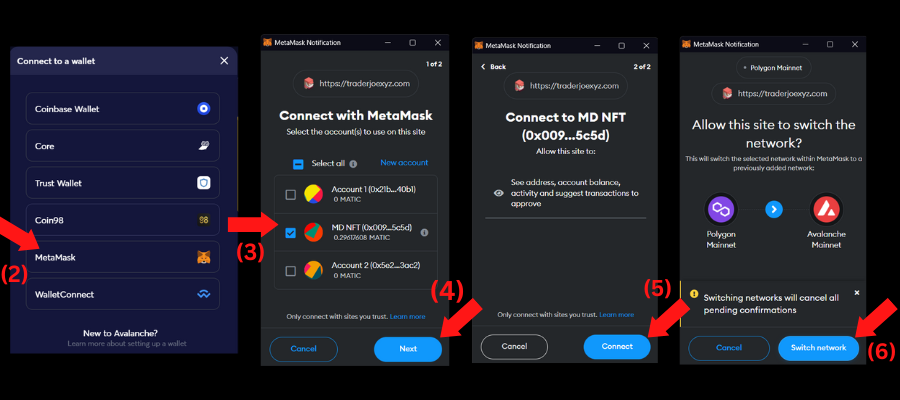
Your wallet is now connected to Trader Joe you. Hence, you can now interact with the application.
Trade
The Trade feature in Trader Joe is equivalent to the Swap feature. Swapping refers to exchanging (trading) your asset for another asset in a decentralized manner.
You can trade your assets on Trader Joe by following the steps below:
- Click on the Trade option in the navbar.
- Select the token you want to swap.
- Enter the number of tokens you want to swap.
- Click on the Swap button.
- Click on the Confirm Swap button.
- Click on the Confirm button in your wallet to confirm the transaction.
- Click on Close.
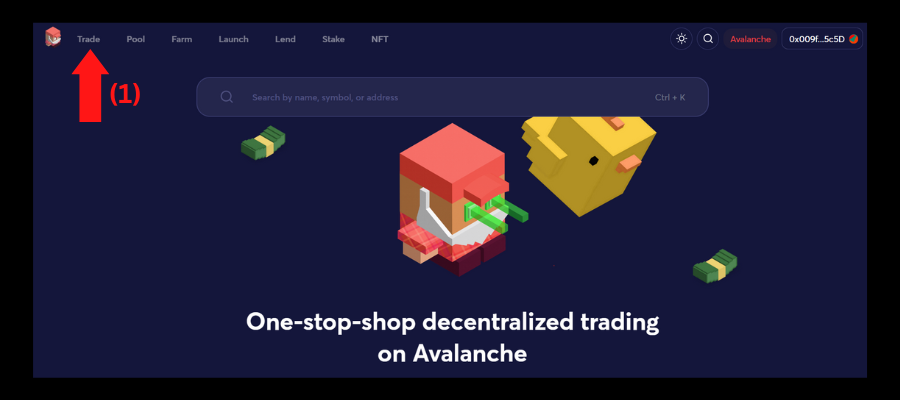
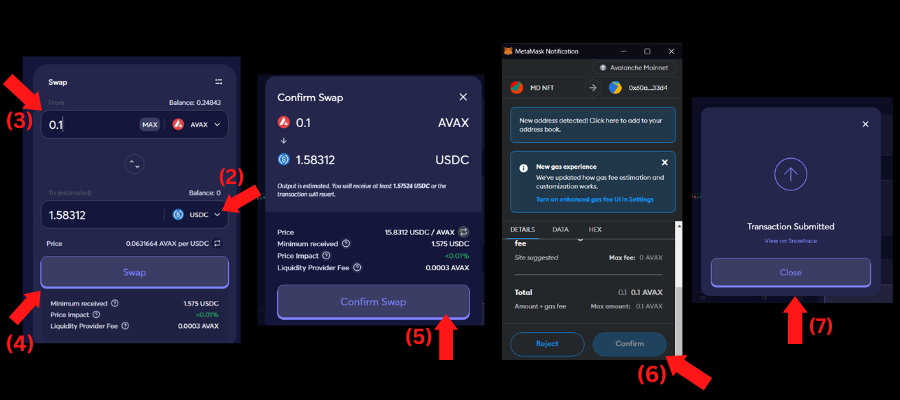
Once the transaction is complete, you will notice the new tokens in your wallet.
Pool
The Pool is a feature in which you add liquidity by depositing two assets to the protocol. By doing so, you contribute towards the platform by increasing its liquidity. A protocol with higher liquidity executes transactions more quickly. For providing liquidity, users are rewarded a yield.
Furthermore, after providing liquidity, a user receives LP tokens (Liquidity Provider) as proof that you have added liquidity. These LP tokens can further be staked to earn additional interest (Farm section).
Add Liquidity:
You can add liquidity by following the steps below:
- Click on the Pool option in the navbar.
- Click on the pool you want to add liquidity to.
- Enter the number of tokens you want to add as liquidity.
- Click on the Approve button to enable the smart contract to interact with your wallet.
- Click on the Confirm button in your wallet.
- Click on the Supply button in the dapp.
- These are the LP tokens you will receive.
- Click on the Confirm Supply button.
- Click on the Confirm button in your wallet to confirm the transaction.
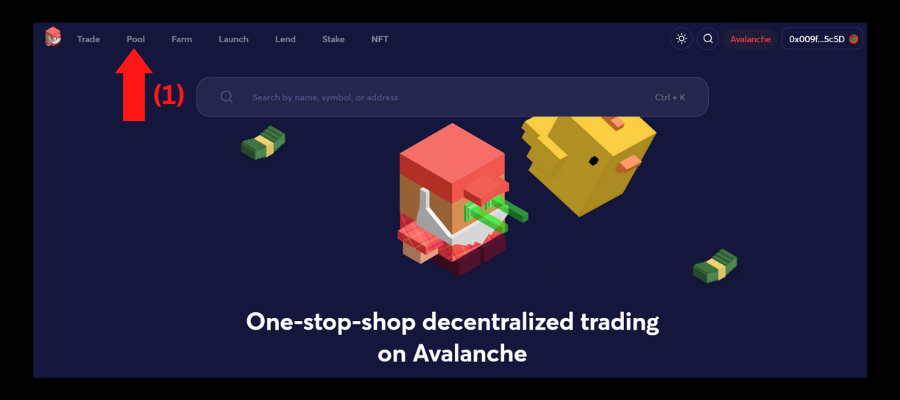
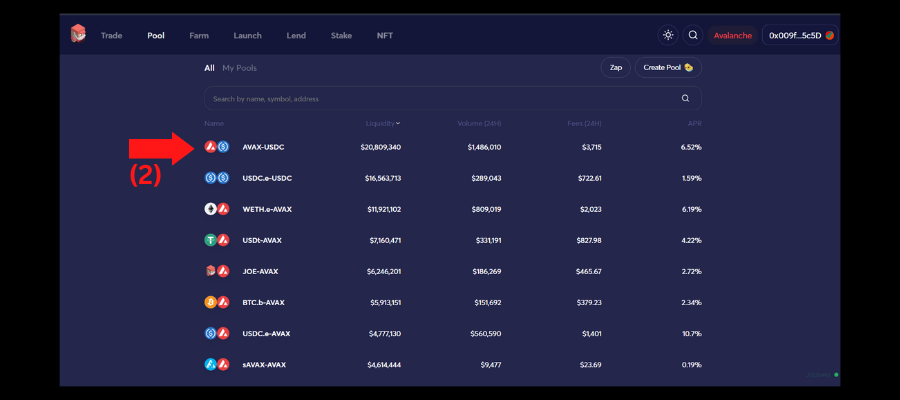
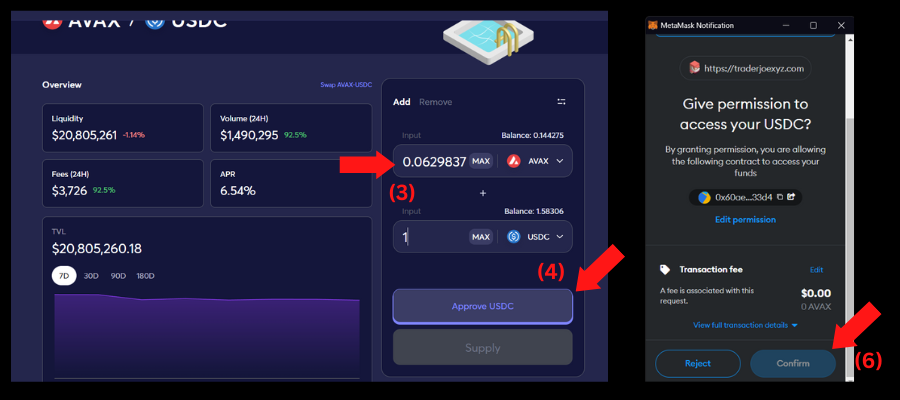
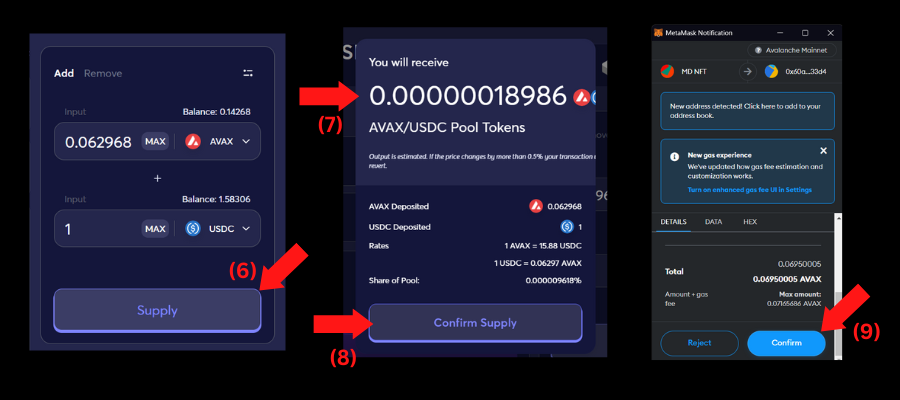
Once the transactions have been completed, the respective pool’s LP tokens will have been credited to your wallet.
Remove Liquidity:
You can remove liquidity by following the steps below:
- Click on the Remove option on the Pool page to which you have added liquidity.
- Enter the amount of liquidity you want to remove.
- Click on the Remove button.
- Click on the Confirm button.
- Click on the Confirm button in your wallet to confirm the transaction.
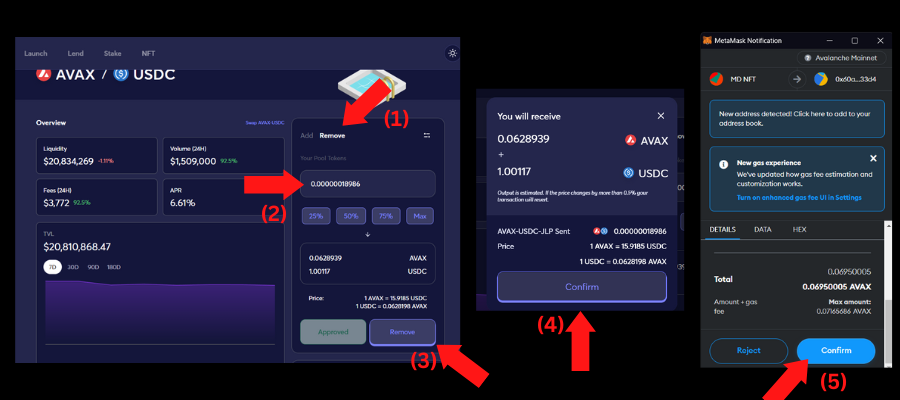
After removing liquidity, the tokens you used to add the respective liquidity will be credited back to your wallet.
Farm
As stated above, the Farm feature allows users to earn additional yield from their LP tokens.
Stake LP:
- Click on the Farm option in the nav bar.
- Select the pool in which you have LP tokens.
- Click the Approve button to enable the smart contract to interact with your wallet.
- Click on the Confirm button in your wallet.
- Enter the number of LP tokens you want to stake.
- Click on the Stake button in the dapp.
- Click on the Confirm button in your wallet to confirm the transaction.
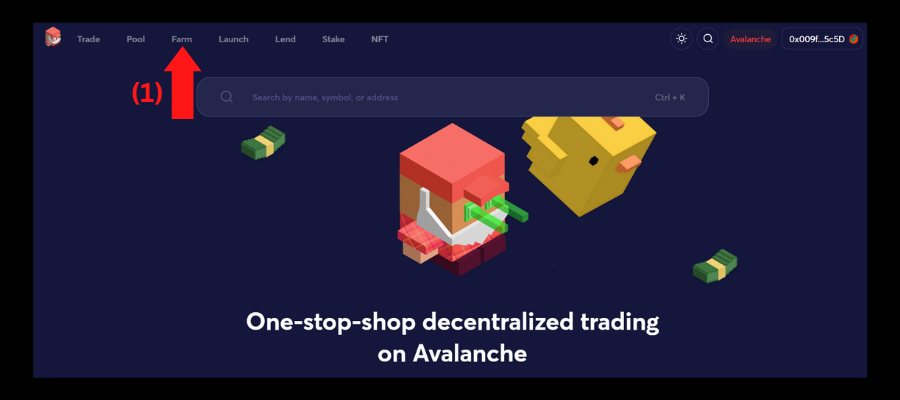
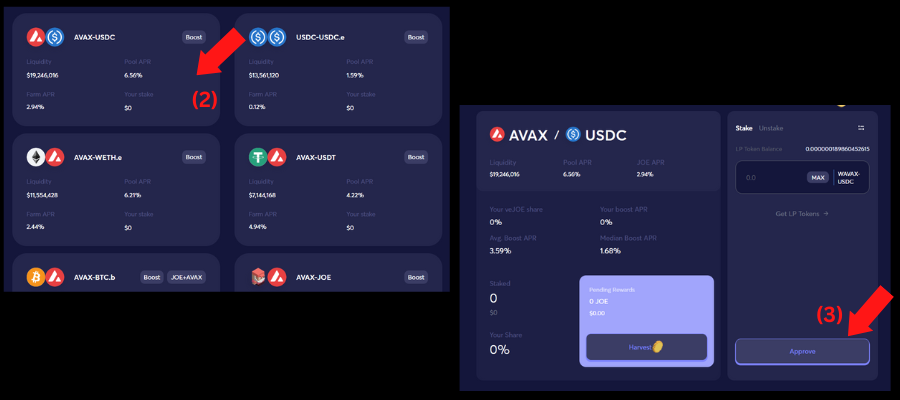
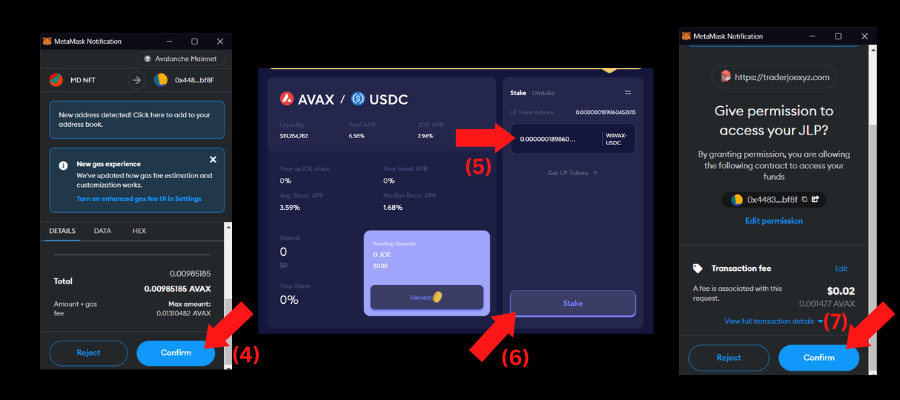
Once the transaction has been executed, you will learn additional yield.
Unstake LP:
You can unstake your LP tokens by following the steps below:
- On the Farm page where you have staked your LP tokens, click on the Unstake option.
- Enter the number of LP tokens you want to unstake.
- Click on the Unstake button.
- Click on the Confirm button in your wallet to confirm the transaction.
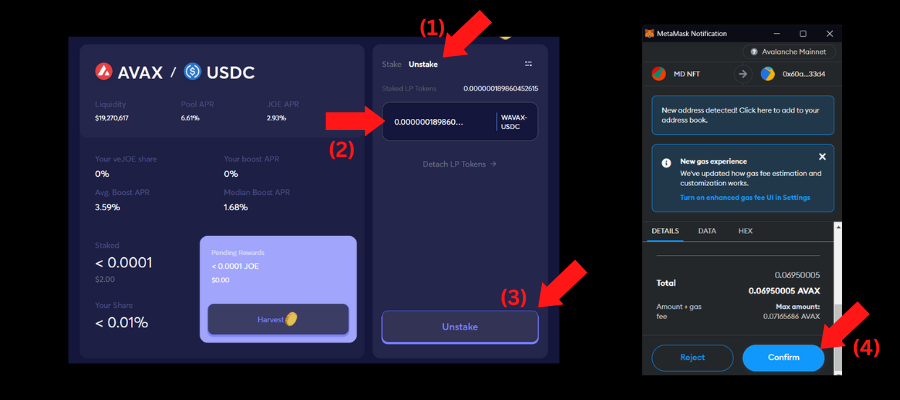
Your LP tokens will be credited back to your wallet once unstaked successfully.
Stake
Staking involves locking your crypto assets for a certain time to earn interest. Trader Joe has four types of tokens – sJOE, rJOE, veJOE, and xJOE. Each of the Joe tokens has its perks and benefits. The benefits of staking each token are as follows:
- sJOE – For staking sJOE tokens, users can receive interest in the form of USDC tokens. The current interest rate for staking the sJOE token is 4.28%, which must be locked for 30 days.
- rJOE – For staking rJOE tokens, users can participate in launch events of new projects.
- veJOE – For staking veJOE tokens, users can receive an extra interest rate on their farm rewards. The extra interest depends on the amount of veJOE tokens staked.
- xJOE – xJOE token cannot be staked and is used for withdrawal purposes only.
To stake any of the above tokens, follow the steps below:
- Click on the Stake option in the nav bar.
- Select the token you want to stake.
- Enter the number of tokens you want to stake.
- Click on the Stake button.
- Click on the Confirm button in your wallet to confirm the transaction.
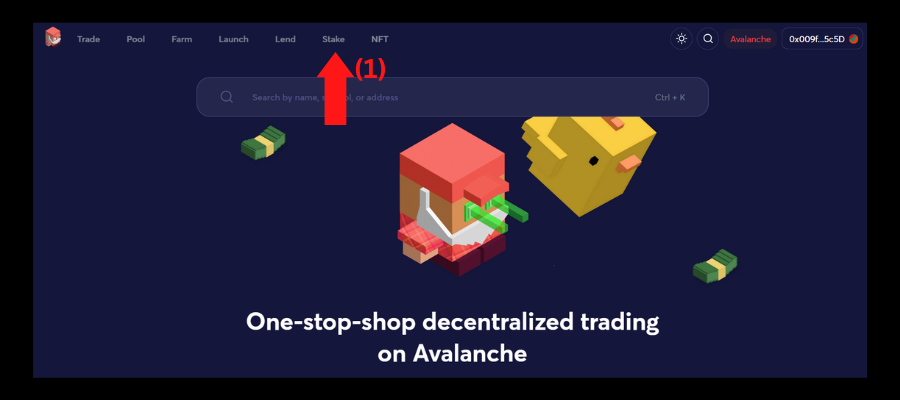
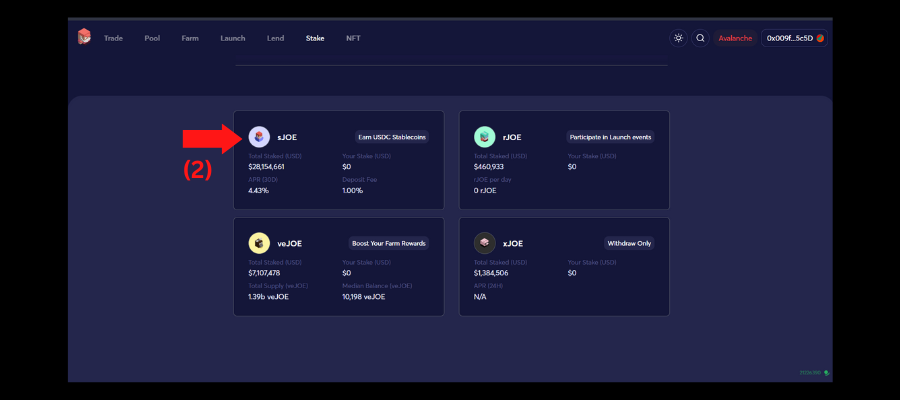
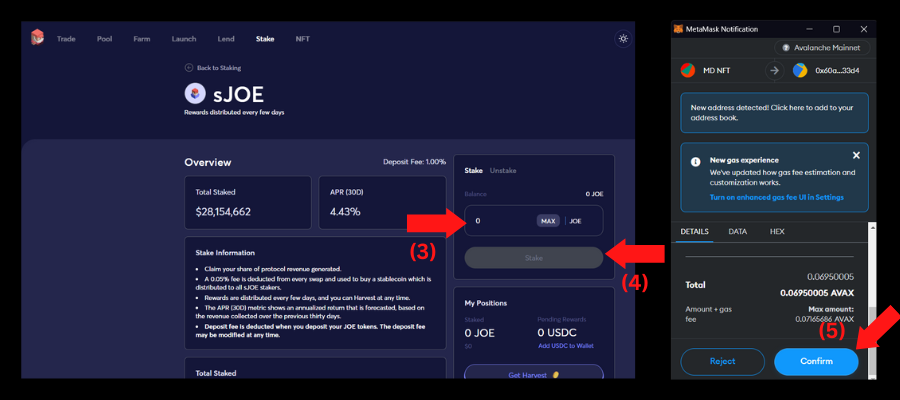
Borrowing and Lending
Trader Joe allows users to lend their assets by depositing them on the application. This deposit acts as collateral against which you can borrow assets.
Lend:
You can lend your assets (add collateral) by following the steps below:
- Click on the Lend option in the nav bar.
- Click on the asset you want to lend from the lend section (left side).
- Enter the number of tokens you want to lend.
- Click on the Deposit button.
- Click on the Confirm button in your wallet to confirm the transaction.

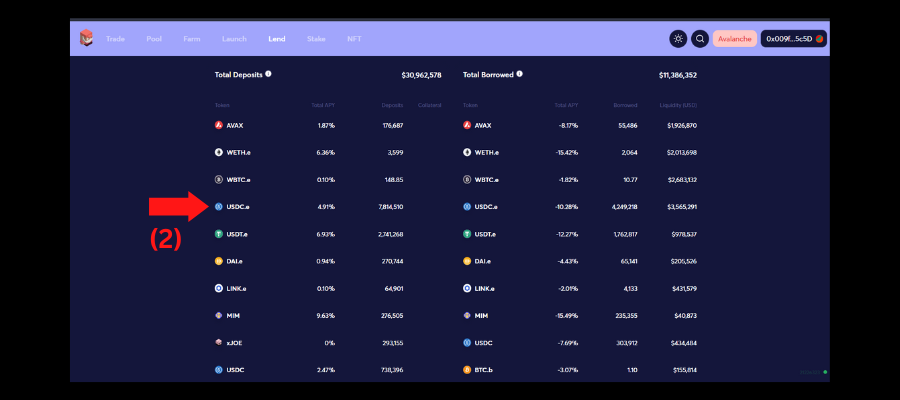
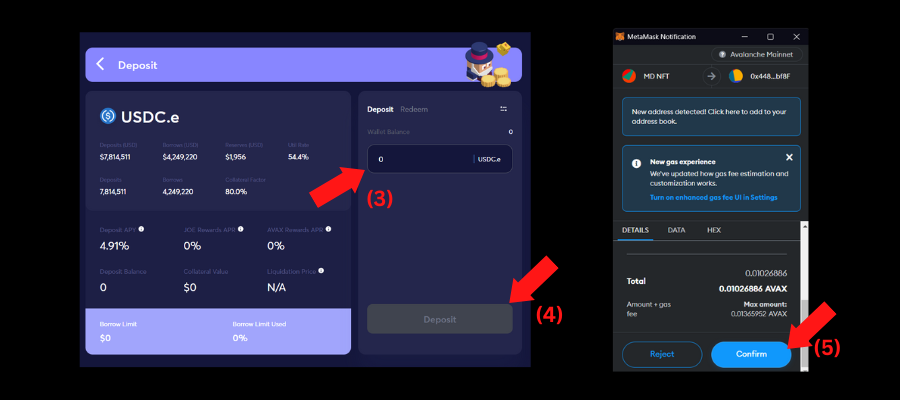
Once the transaction is completed, you will earn the respective interest based on the asset you added as collateral. You can use this collateral to borrow assets.
Borrow:
It is necessary to add collateral (lend) first to borrow assets. You can borrow assets by following the steps below:
- On the lending page, click on the asset you want to borrow from the borrow section (right side).
- Enter the number of tokens you want to borrow.
- Click on the Borrow button.
- Click on the Confirm button in your wallet to confirm the transaction.
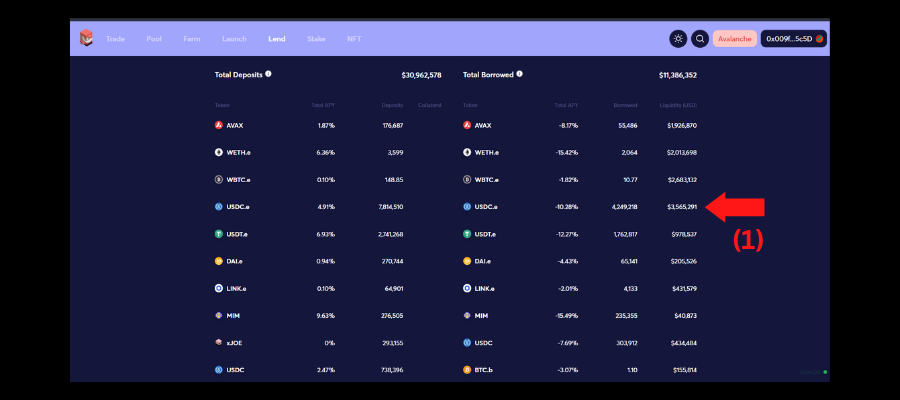

NFT Marketplace
Trader Joe has its NFT Marketplace called JoePegs. An NFT Marketplace is a platform where users can buy and sell NFTs. NFTs are Non-Fungible tokens used to represent ownership of digital assets. There are several NFT collections on JoePegs, and since Trader Joe is a dapp built on the Avalanche blockchain, each NFT is also built on the Avalanche blockchain.
To purchase an NFT, follow the steps below:
- Click on the NFT option in the nav bar.
- In the search bar, search for the NFT collection of your choice.
- Select the NFT collection.
- Select the NFT you want to buy.
- Click on the Buy Now button.
- Choose your method of payment.
- Click on the Buy button.
- Click on the Confirm button in your wallet to confirm the transaction.

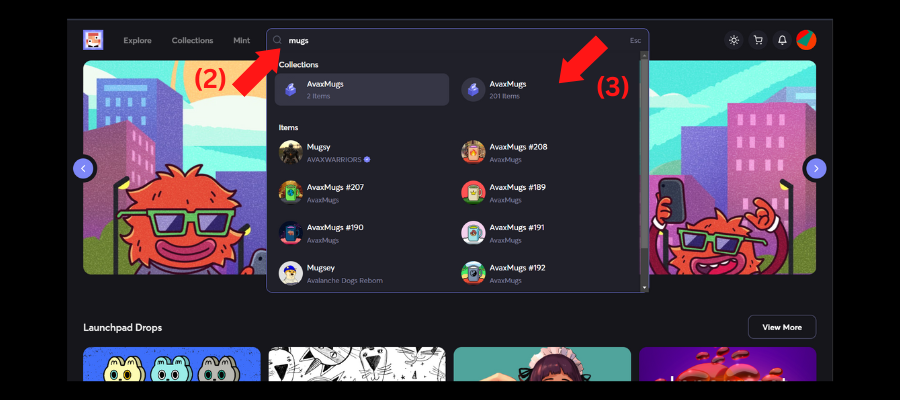
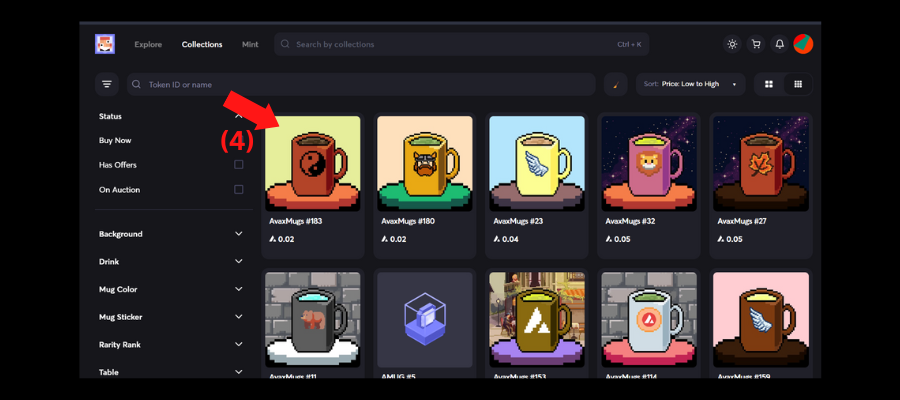
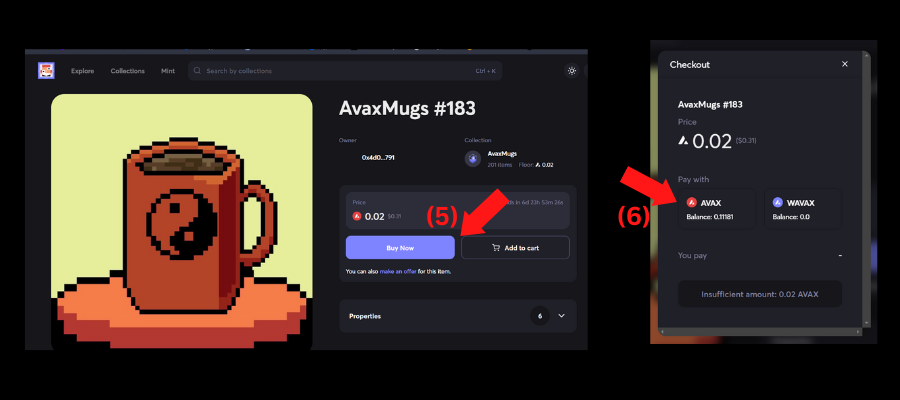
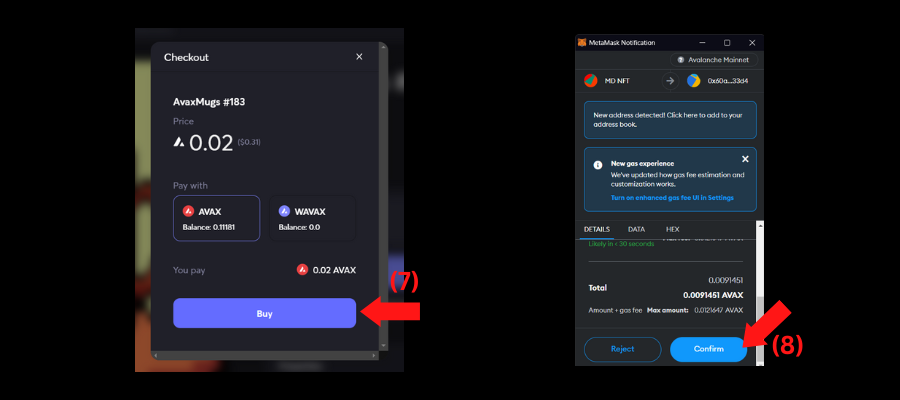
Conclusion
There you go; you now know how to use a decentralized application on the Avalanche blockchain. To reduce risk, you can now diversify your staking and DeFi portfolio across different blockchains. Before connecting your wallet to any decentralized application, please thoroughly research its risks.
All the content in this article is purely for educational purposes and does NOT provide any financial advice. If you have enjoyed this guide, please let me know in the comments and consider following. Thank you for your time.
Here are some key takeaways from the article:
- Trader Joe’s is an all-in-one decentralized application built on the Avalanche blockchain.
- Trader Joe’s offers services such as swapping, Pool, Yield Farming, NFTs, Staking, Lending, and Borrowing, as well as a launchpad.
- Users can earn additional rewards for staking their LP (Liquidity Provider) tokens.
- Users can trade NFTs built on the Avalanche blockchain through Trader Joe’s own NFT Marketplace, JoePegs.
- No content in this guide provides any Financial advice.
The media shown in this article is not owned by Analytics Vidhya and is used at the Author’s discretion.






